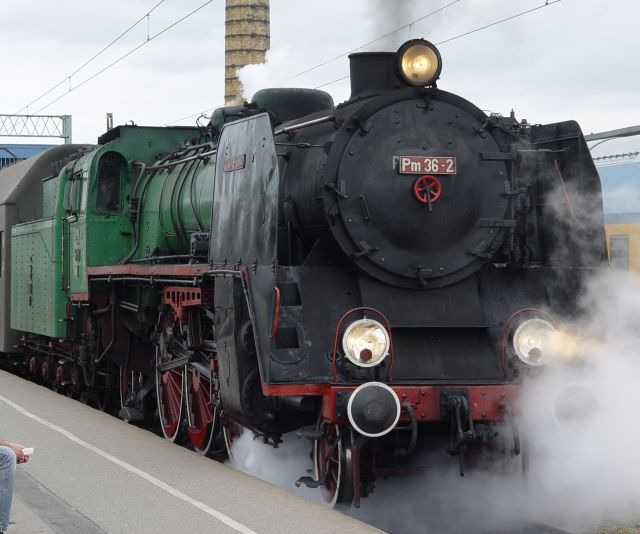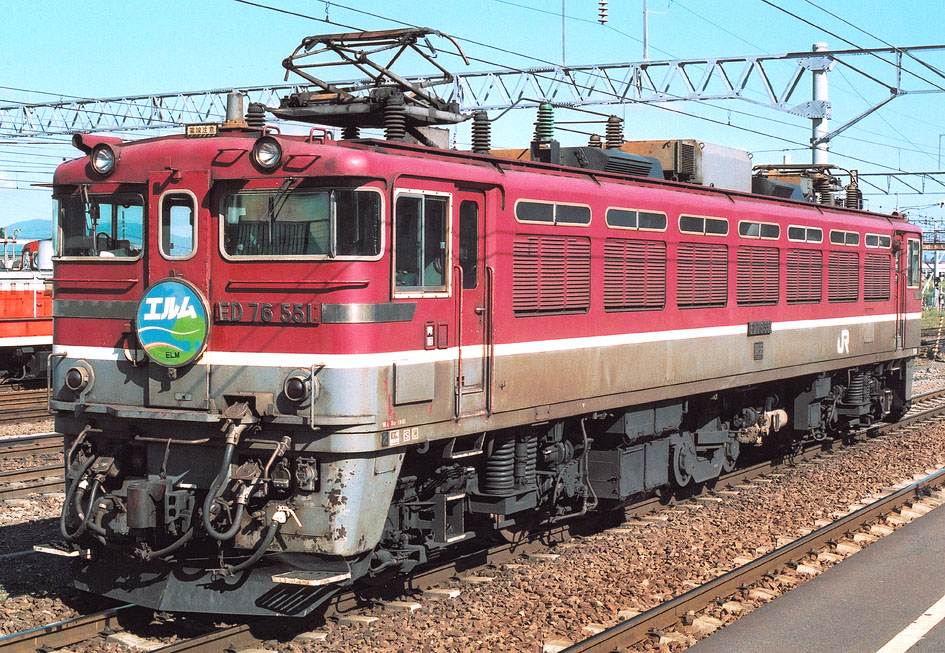|
PKP Class SP42
SP42 is the name for a Polish diesel locomotive used for passenger services. History The SP42 is in fact the same locomotive as SM42, but modified for passenger transport. The modification was carried out by adding a heating system for passenger cars on the locomotive. Withdrawal of this class started in '90s, some of them was rebuilt into SU42 class (electrical heating instead of steam). SP42 class were totally withdrawn from PKP's service in year 2008. The last one (number 007 from depot Skarżysko Kamienna) made its special run with Bhp class double deckers from Skarżysko to Tomaszów Mazowiecki. Nicknames This loco used to be called the following names: *Łajka *Kociołek (eng. ''boiler'') - because of the steam heating system *Zebra - from the painting *Wibrator (eng. '' Vibrator'') - from vibrations produced by the engine *Eleska - from the factory number: Ls800 *Fablok - from the name of the producer See also *Polish locomotives designation PKP classification system (Po ... [...More Info...] [...Related Items...] OR: [Wikipedia] [Google] [Baidu] |
Fablok
Fablok is a Polish manufacturer of locomotives, based in Chrzanów. Until 1947 the official name was ''First Factory of Locomotives in Poland Ltd.'' ( pl, Pierwsza Fabryka Lokomotyw w Polsce Sp. Akc.), Fablok being a widely used syllabic abbreviation of ''Fabryka Lokomotyw'', among others as the company's telegraphic address. It is now named "BUMAR - FABLOK S.A. (corporation)". Fablok is located in the town of Chrzanów in Lesser Poland. As of 2009, Fablok no longer builds new locomotives. History Early years 1919-1939 Fablok was established in 1919. A year later a contract was signed with the Polish government to supply 1,200 steam locomotives within ten years to the Polish State Railways (PKP). The first locomotive was delivered on 7 April 1924. In 1931, the first locomotive was exported to the Bulgarian State Railways. During 1935 and 1936, five electric locomotives were built under license from Metropolitan-Vickers. In 1935–1936, Fablok produced five Luxtorpedas (fast ... [...More Info...] [...Related Items...] OR: [Wikipedia] [Google] [Baidu] |
Bo′Bo′
B-B and Bo-Bo are the Association of American Railroads (AAR) and British classifications of wheel arrangement for railway locomotives with four axles in two individual bogies. They are equivalent to the B′B′ and Bo′Bo′ classifications in the UIC system. The arrangement of two, two-axled, bogies is a common wheel arrangement for modern electric and diesel locomotives. Bo-Bo Bo-Bo is the UIC indication of a wheel arrangement for railway vehicles with four axles in two individual bogies, all driven by their own traction motors. It is a common wheel arrangement for modern electric and diesel-electric locomotives, as well as power cars in electric multiple units. Most early electric locomotives shared commonalities with the steam engines of their time. These features included side rods and frame mounted driving axles with leading and trailing axles. The long rigid wheelbase and the leading and trailing axles reduced cornering stability and increased weight. The Bo-Bo ... [...More Info...] [...Related Items...] OR: [Wikipedia] [Google] [Baidu] |
Polish State Railways
(''PKP S.A.''; en, Polish State Railways, Inc.) is the dominant railway operator in Poland. The company was founded when the former state-owned enterprise was divided into several units based on the need for separation between infrastructure management and transport operations. PKP S.A. is the dominant company in PKP Group collective that resulted from the split, and maintains in 100% share control, being fully responsible for the assets of all of the other PKP Group component companies. The group's organisations are dependent upon PKP S.A., but proposals for privatisation have been made. PKP today Pricing system The pricing system currently employed by PKP is highly regressive. On international routes such as, for example, the Berlin-Warsaw Express and the IC-Nightbus Warsaw – Vilnius, a global pricing system is in use which requires one to buy two separate tickets (one in each direction) in place of a single consolidated return ticket. The long-distance and local trains' ... [...More Info...] [...Related Items...] OR: [Wikipedia] [Google] [Baidu] |
Poland
Poland, officially the Republic of Poland, is a country in Central Europe. It is divided into 16 administrative provinces called voivodeships, covering an area of . Poland has a population of over 38 million and is the fifth-most populous member state of the European Union. Warsaw is the nation's capital and largest metropolis. Other major cities include Kraków, Wrocław, Łódź, Poznań, Gdańsk, and Szczecin. Poland has a temperate transitional climate and its territory traverses the Central European Plain, extending from Baltic Sea in the north to Sudeten and Carpathian Mountains in the south. The longest Polish river is the Vistula, and Poland's highest point is Mount Rysy, situated in the Tatra mountain range of the Carpathians. The country is bordered by Lithuania and Russia to the northeast, Belarus and Ukraine to the east, Slovakia and the Czech Republic to the south, and Germany to the west. It also shares maritime boundaries with Denmark and Sweden. ... [...More Info...] [...Related Items...] OR: [Wikipedia] [Google] [Baidu] |
Diesel Locomotive
A diesel locomotive is a type of railway locomotive in which the prime mover is a diesel engine. Several types of diesel locomotives have been developed, differing mainly in the means by which mechanical power is conveyed to the driving wheels. Early internal combustion locomotives and railcars used kerosene and gasoline as their fuel. Rudolf Diesel patented his first compression-ignition engine in 1898, and steady improvements to the design of diesel engines reduced their physical size and improved their power-to-weight ratios to a point where one could be mounted in a locomotive. Internal combustion engines only operate efficiently within a limited power band, and while low power gasoline engines could be coupled to mechanical transmissions, the more powerful diesel engines required the development of new forms of transmission. This is because clutches would need to be very large at these power levels and would not fit in a standard -wide locomotive frame, or wear too quic ... [...More Info...] [...Related Items...] OR: [Wikipedia] [Google] [Baidu] |
SM42
SM42 is the PKP class for a Polish shunter diesel locomotive for shunting and light freight traffic, built by Fablok in Chrzanów (manufacturer's designation is Ls800E, designer's designation 6D). History The SM42 was the first Polish-designed heavier diesel-electric locomotive and was the most numerous one in its country of origin. Introduction The technical documentation for this locomotive was developed in 1958-1962 by the state Central Construction Bureau of Railway Stock Industry (CBKPTK) in Poznań, as type 6D. The production was given over to the Fablok Locomotive Factory in Chrzanów, where it was designated Ls800E (meaning an 800 HP diesel locomotive with electric transmission). The prototype was ready in December 1963. It was lent to the Polish State Railways (PKP), as the SM42-001, the class designation 'SM' meaning a diesel shunter locomotive, and was tested in Warsaw in 1964. Two improved locomotives were built for the PKP in 1964, and twenty in 1965. In 196 ... [...More Info...] [...Related Items...] OR: [Wikipedia] [Google] [Baidu] |
SU42
SU42 is a Polish diesel-electric locomotive used for light freight and passenger traffic purposes. History The SU42 is in fact the same locomotive as SM42 and SP42. The original class SU42 were modifications of class SM42 done during the 1970s. This modification involved the installation of a 500 volt electric train supply for carriage heating, supplied directly by locomotive's generator. The class retained the original SM42 serial number, however most of those converted have now been converted back to SM42 or withdrawn as the carriages using 500 V supply have been withdrawn. The second phase of modification was carried out between 1999 and 2000 from class SP42. The modification centered on the addition of 3 kV electric train supply. The modified locomotives were classified as class SU42-5xx. 40 of the class were eventually modified and they are based at various depots across the network. Unlike previous iteration, SU42-5xx has electric train heating powered by a separate Caterpi ... [...More Info...] [...Related Items...] OR: [Wikipedia] [Google] [Baidu] |
Zebra
Zebras (, ) (subgenus ''Hippotigris'') are African equines with distinctive black-and-white striped coats. There are three living species: the Grévy's zebra (''Equus grevyi''), plains zebra (''E. quagga''), and the mountain zebra (''E. zebra''). Zebras share the genus ''Equus'' with horses and asses, the three groups being the only living members of the family Equidae. Zebra stripes come in different patterns, unique to each individual. Several theories have been proposed for the function of these stripes, with most evidence supporting them as a deterrent for biting flies. Zebras inhabit eastern and southern Africa and can be found in a variety of habitats such as savannahs, grasslands, woodlands, shrublands, and mountainous areas. Zebras are primarily grazers and can subsist on lower-quality vegetation. They are preyed on mainly by lions, and typically flee when threatened but also bite and kick. Zebra species differ in social behaviour, with plains and mountain zebra ... [...More Info...] [...Related Items...] OR: [Wikipedia] [Google] [Baidu] |
Vibrator (mechanical)
A vibrator is a mechanical device to generate vibrations. The vibration is often generated by an electric motor with an unbalanced mass on its driveshaft. There are many different types of vibrator. Typically, they are components of larger products such as smartphones, pagers, or video game controllers with a "rumble" feature. Vibrators as components When smartphones and pagers vibrate, the vibrating alert is produced by a small component that is built into the phone or pager. Many older, non-electronic buzzers and doorbells contain a component that vibrates for the purpose of producing a sound. Tattoo machines and some types of electric engraving tools contain a mechanism that vibrates a needle or cutting tool. Aircraft stick shakers use a vibrating mechanism attached to the pilots' control yokes to provide a tactile warning of an impending aerodynamic stall. Industrial vibrators Vibrators are used in many different industrial applications both as components and as individu ... [...More Info...] [...Related Items...] OR: [Wikipedia] [Google] [Baidu] |
Polish Locomotives Designation
PKP classification system (Polish locomotive designation) is a system of assigning letters and numbers to series and individual locomotives used by the PKP - Polish national railroad operator. The system was introduced for the steam stock by the Ministry of Railways on 3 November 1922, shortly after Poland regained her independence (1918) when the Polish railroads inherited a variety of German, Austrian and Russian steam locomotives, each with its own type convention. It was put into use in 1923–1926 years. The adopted solution allows telling the locomotive type (passenger/freight/mixed), wheel arrangement, origin and some other information from the type designation. After World War II a similar system was also adapted for diesel and electric locomotives. Electric and diesel locomotives In the case of electric and diesel locomotives, and multiple units, a designation consists of two capital letters and two digits, without a space between letters and digits. The first letter E ... [...More Info...] [...Related Items...] OR: [Wikipedia] [Google] [Baidu] |
Bo′Bo′ Locomotives
B-B and Bo-Bo are the Association of American Railroads (AAR) and British classifications of wheel arrangement for railway locomotives with four axles in two individual bogies. They are equivalent to the B′B′ and Bo′Bo′ classifications in the UIC system. The arrangement of two, two-axled, bogies is a common wheel arrangement for modern electric and diesel locomotives. Bo-Bo Bo-Bo is the UIC indication of a wheel arrangement for railway vehicles with four axles in two individual bogies, all driven by their own traction motors. It is a common wheel arrangement for modern electric and diesel-electric locomotives, as well as power cars in electric multiple units. Most early electric locomotives shared commonalities with the steam engines of their time. These features included side rods and frame mounted driving axles with leading and trailing axles. The long rigid wheelbase and the leading and trailing axles reduced cornering stability and increased weight. The Bo-Bo con ... [...More Info...] [...Related Items...] OR: [Wikipedia] [Google] [Baidu] |






